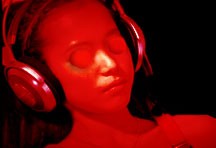Psychometry is a paranormal or pseudoscientific concept that suggests individuals can obtain information about the history, emotions, or events associated with an object by touching or holding it. While psychometry lacks empirical scientific support and is considered a fringe belief, it continues to be a topic of fascination for some. Here’s an exploration of psychometry and the practice of object readings:
1. Definition of Psychometry:
- Psychometry, also known as “object reading” or “psychoscopy,” is the claimed psychic ability to glean information from an object through touch or physical contact. Practitioners of psychometry believe that objects can retain the energy or vibrations of their owners or the events they have been involved in.
2. History and Origins:
- The concept of psychometry has ancient roots and can be traced back to spiritual and paranormal traditions. In the late 19th and early 20th centuries, it gained popularity within the spiritualist and occult movements.

3. The Process of Object Readings:
- Psychometry readings typically involve a practitioner holding an object (often a personal item, such as jewelry or a photograph) and focusing their psychic or intuitive abilities on the object. They may then describe impressions, images, emotions, or insights they receive.
4. Claims and Skepticism:
- Skeptics of psychometry point out that there is no scientific evidence to support the existence of this ability. They argue that any information derived from object readings could be obtained through more conventional means, such as cold reading, intuition, or educated guesses.
5. Parapsychology and Research:
- Parapsychologists, who study paranormal phenomena, have explored psychometry as part of their research into extrasensory perception (ESP). However, the scientific community generally views parapsychology as a pseudoscience and remains highly skeptical of psychometry.
6. Subjectivity and Interpretation:
- Object readings are highly subjective, relying on the practitioner’s interpretation of the sensations or impressions they experience when touching an object. This subjectivity can lead to a wide range of interpretations.
7. Use in Psychic and Paranormal Practices:
- Psychometry is sometimes incorporated into psychic and paranormal practices, such as mediumship or spiritual readings, to provide insight into a person’s life or the history of an object.
8. Cultural and Historical Significance:
- Despite the skepticism surrounding psychometry, it continues to have cultural and historical significance as a part of folklore, spiritualism, and paranormal beliefs.
9. Entertainment and Popular Culture:
- Psychometry and object readings have been featured in various forms of entertainment, including movies, television shows, and literature, often as a plot device in mysteries or paranormal stories.
10. The Power of Suggestion:
Some object readings may be influenced by the power of suggestion. A person receiving a reading may unconsciously provide cues or information that the practitioner then interprets as psychic insights.
Psychometry remains a controversial and unverified concept, with scientific skepticism surrounding its validity. While some individuals believe in the power of object readings, others view it as a pseudoscientific or paranormal belief. The practice of psychometry continues to evoke curiosity and discussion, offering insight into the complex relationship between belief, perception, and the paranormal.











